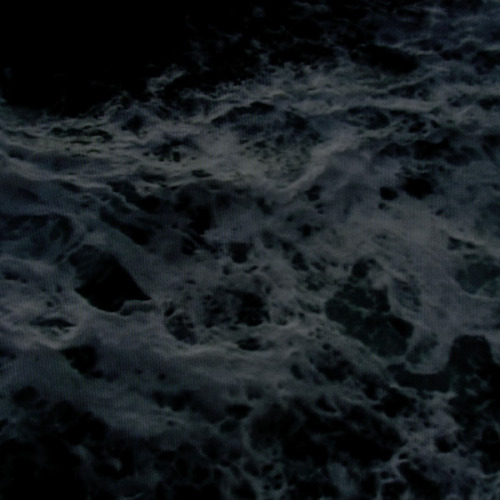
Normal Love – Survival Tricks
I’m not ordinarily the kind of listener to participate in “best record of year X” rhetoric, but Normal Love has left me no choice in 2012. Avant rock fans: this is your album of the year. A co-release between Public Eyesore and Weasel Walter’s ugEXPLODE label, Survival Tricks is available on CD and LP. Normally, PE promos show up on my doorstep in CD format, but I love this record so much that I’m going to order the vinyl, too.
I first heard Normal Love back around 2008, shortly after their self-titled debut dropped on High Two records. At the time, I was obsessed with the “brutal prog” attack of the last few Flying Luttenbachers albums (especially “Systems Emerge from Complete Disorder” and “Cataclysm”) and Zs “Arms” LP of 2007, and I was actively looking for other bands working toward similar integrations of the compositional rigor of contemporary classical music, the swagger of free jazz, and the boundless energy of hardcore and metal. The closest thing I found was the Normal Love debut, which I found incredibly interesting musically, though it lacked a little of the bravado of Zs and the Luttenbachers. 2009 brought the “Peel” EP, whose two songs hinted at new facets in the group’s development with the addition of vocals by Merissa Martigoni and a new emphasis on jagged rhythmic work.
As good as those releases are—and they’re very much worth hearing—nothing can prepare you for the shock of “Survival Tricks.” Listening to this album for the first time was one of those all-too-rare experiences (and the reason I get excited about listening to records) where I found myself shouting out loud in response to the music: “holy shit,” “fuck yes,” omigod, ARRRRRRR. Normal Love is a whole new band, every bit as technically gifted but alive with a magical, feral intensity. The raw power of this album can’t be ignored. This recording couldn’t turn into background music if you played it in a war zone.
Have a taste for yourself: there is a new video for the opening track, “Lend Some Treats.” While I could regale you with tales of the brilliance one can make of insane rhythms that multiply in Fibonacci-esque explosions, the contrary whole-step pulling between voice and violin on the word “try,” the various regroupings on unison notes that pedal off in wild directions, and the impossible hocketing of sounds around the whole ensemble, experiencing it yourself is simply too primal and pre-language to adequately put into words:
Normal Love – Lend Some Treats (Official Music Video) from Haoyan of America on Vimeo.
As you might imagine from that track, describing the stylistic tendencies of “Survival Tricks” is a challenge maybe better left to listening than description. The music focuses intensely on rhythm, both elemental macrorhythms and quickly-articulated nanorhythms: brainwaves soaring over the heart and the lungs. Though the songs mostly gravitate toward tonal centers, and melodic invention has its place (especially in the affecting melodies of “I Heard You Could See Baltimore from There”), rhythm and timbre demand the most attention. The closest RIYL notion that I can come up is somewhat abstract, but maybe it’ll give you a good starting impression: I always felt like the Zs album “Arms” opened up a set of new sonic possibilities that nobody explored any further, including Zs. “Survival Tricks” goes many fathoms deeper into that territory than anyone has before, unearthing musical discoveries that will startle both your head and your heart. Most of these pieces are incredibly complex, fully satisfying for deep cerebral listening, but there is a raw power behind the whole record that demands more fundamental emotional reactions. You’ve got to feel this one.
Now that most of Normal Love’s tracks feature vocals, and they’ve taken such a turn toward the visceral from the cerebral, I found it interesting to note that the lyrical content of these pieces tends to focus on undomesticated fundamentals, too: moss, clay, earth, brine, water, solitude, young sex, “Life: quality or quantity?” I was also moved by the transcendent vibes of this record in terms of gender identity—so many albums that get this “brutal,” for lack of a better word, feel overwhelmingly masculine, but this music is equal parts masculine and feminine. I’m sure the participation of women in the recording (Merissa Martigoni on vocals and keys, and Jessica Pavone on amplified violin on many tracks) has an obvious contribution toward that balance, but some of the best lyrical moments toward female empowerment were penned by men in the group, such as the lyrics to the “Baltimore” track mentioned above that came from bassist Evan Lipson.
Hearing this record has changed the way I feel about music in a way that few records have done. This one is going on a very short personal list of heavy albums I return to frequently, including Kayo Dot’s “Choirs of the Eye,” Time Of Orchids’ “Sarcast While,” Extra Life’s “Secular Works,” and the Flying Luttenbachers and Zs records mentioned above. If you’re into those bands, you simply have to give this a try. And Normal Love is planning a tour for later this year, which will feature new member Rachael Bell on voice/sampler, around late August/September—check for tour dates at their website.
—Scott Scholz


